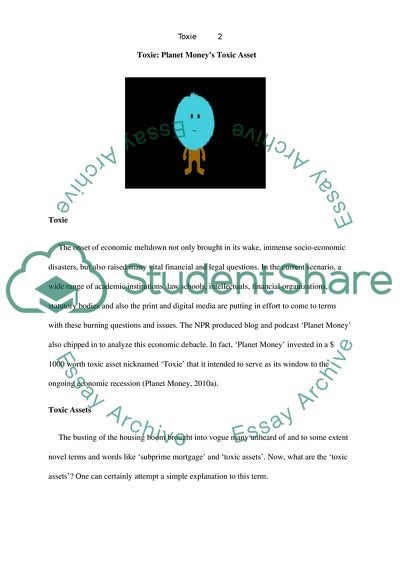Cite this document
(Planet Moneys Toxic Asset Research Paper Example | Topics and Well Written Essays - 1250 words, n.d.)
Planet Moneys Toxic Asset Research Paper Example | Topics and Well Written Essays - 1250 words. https://studentshare.org/environmental-studies/1743002-toxie
Planet Moneys Toxic Asset Research Paper Example | Topics and Well Written Essays - 1250 words. https://studentshare.org/environmental-studies/1743002-toxie
(Planet Moneys Toxic Asset Research Paper Example | Topics and Well Written Essays - 1250 Words)
Planet Moneys Toxic Asset Research Paper Example | Topics and Well Written Essays - 1250 Words. https://studentshare.org/environmental-studies/1743002-toxie.
Planet Moneys Toxic Asset Research Paper Example | Topics and Well Written Essays - 1250 Words. https://studentshare.org/environmental-studies/1743002-toxie.
“Planet Moneys Toxic Asset Research Paper Example | Topics and Well Written Essays - 1250 Words”. https://studentshare.org/environmental-studies/1743002-toxie.


